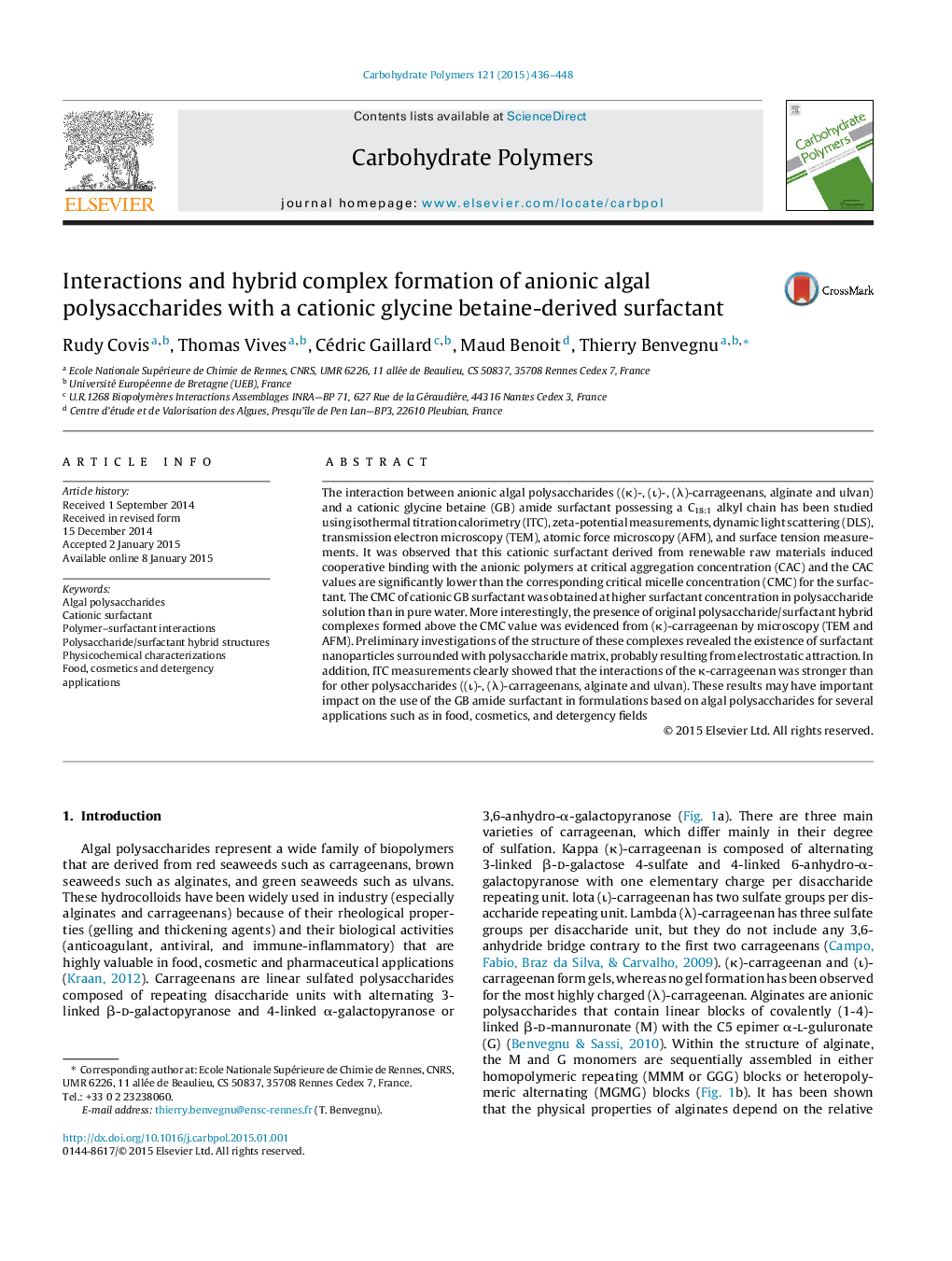| کد مقاله | کد نشریه | سال انتشار | مقاله انگلیسی | نسخه تمام متن |
|---|---|---|---|---|
| 1383284 | 1500637 | 2015 | 13 صفحه PDF | دانلود رایگان |
• The study relative to the interactions between anionic algal polysaccharides and a cationic glycine betaine-derived surfactant was achieved.
• Original polysaccharide-surfactant hybrid complexes formed above the CMC value was evidenced from (κ)-carrageenan by TEM and AFM microscopies.
• ITC measurements of these mixed systems revealed different interaction strengths depending on polysaccharide structure and surfactant concentration.
The interaction between anionic algal polysaccharides ((κ)-, (ι)-, (λ)-carrageenans, alginate and ulvan) and a cationic glycine betaine (GB) amide surfactant possessing a C18:1 alkyl chain has been studied using isothermal titration calorimetry (ITC), zeta-potential measurements, dynamic light scattering (DLS), transmission electron microscopy (TEM), atomic force microscopy (AFM), and surface tension measurements. It was observed that this cationic surfactant derived from renewable raw materials induced cooperative binding with the anionic polymers at critical aggregation concentration (CAC) and the CAC values are significantly lower than the corresponding critical micelle concentration (CMC) for the surfactant. The CMC of cationic GB surfactant was obtained at higher surfactant concentration in polysaccharide solution than in pure water. More interestingly, the presence of original polysaccharide/surfactant hybrid complexes formed above the CMC value was evidenced from (κ)-carrageenan by microscopy (TEM and AFM). Preliminary investigations of the structure of these complexes revealed the existence of surfactant nanoparticles surrounded with polysaccharide matrix, probably resulting from electrostatic attraction. In addition, ITC measurements clearly showed that the interactions of the κ-carrageenan was stronger than for other polysaccharides ((ι)-, (λ)-carrageenans, alginate and ulvan). These results may have important impact on the use of the GB amide surfactant in formulations based on algal polysaccharides for several applications such as in food, cosmetics, and detergency fields
Journal: Carbohydrate Polymers - Volume 121, 5 May 2015, Pages 436–448
